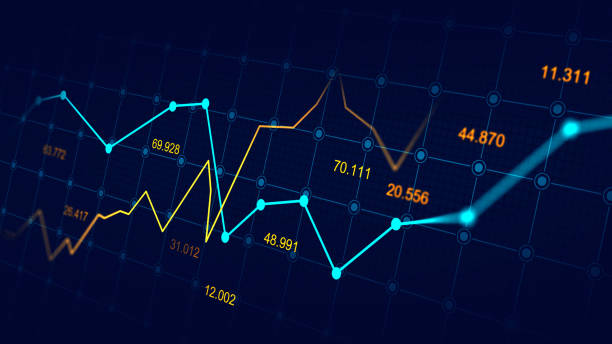
Forex trading is all about making informed decisions based on price movements and market trends. To achieve this, traders rely on charts and indicators, which provide valuable insights into price action, momentum, and potential future movements. Mastering forex charts and indicators is essential for both beginner and experienced traders, as they help identify profitable opportunities and minimize risks.
In this guide, we will explore the different types of forex charts, key chart patterns, essential indicators, and how to use them effectively to enhance trading decisions.
Introduction to Forex Charts and Indicators
Foreign exchange (Forex) trading is one of the most dynamic financial markets, offering traders opportunities to profit from currency price fluctuations. To make informed trading decisions, traders rely on Forex charts and indicators, which provide visual representations of price movements and analytical tools to predict future trends. Understanding these tools is crucial for both beginners and experienced traders.
Why Charts and Indicators Are Essential for Trading
Forex charts are graphical representations of currency price movements over a specific period. They help traders visualize trends, identify entry and exit points, and make data-driven trading decisions. Indicators, on the other hand, are mathematical calculations based on price, volume, or open interest that provide additional insights into market behavior. Using charts and indicators effectively allows traders to:
- Spot trends and potential reversals
- Identify support and resistance levels
- Gauge market momentum and volatility
- Make strategic trading decisions with greater confidence
How Technical Analysis Helps Traders Make Informed Decisions
Technical analysis is the study of past market data to predict future price movements. It relies on charts, patterns, and indicators to assess market conditions. Unlike fundamental analysis, which examines economic factors, technical analysis focuses solely on price action. Traders use it to:
- Determine whether a currency pair is in an uptrend, downtrend, or ranging market
- Identify high-probability trade setups
- Improve timing for trade entries and exits
Types of Forex Charts
Forex charts are essential tools that help traders analyze past price movements and predict future trends. They come in various forms, each offering unique insights into market behavior. The three primary types of Forex charts—line charts, bar charts, and candlestick charts—provide different levels of detail and visual representation, catering to traders with varying levels of expertise and trading strategies.
Line Charts: Simple Yet Effective
Line charts are the most basic type of forex chart, connecting closing prices over a period with a single line. They provide a clear overview of price trends but lack detailed information about price fluctuations within a time frame. Line charts are ideal for identifying long-term trends and major support/resistance levels.
Bar Charts: Understanding Open, High, Low, and Close (OHLC)
Bar charts display more information than line charts by showing the open, high, low, and close (OHLC) prices for each time period. Each bar consists of:
- A vertical line representing the price range
- A left horizontal dash for the opening price
- A right horizontal dash for the closing price
Candlestick Charts: The Most Popular Chart Type
Candlestick charts provide the same OHLC data as bar charts but with a visually intuitive format. Each candlestick has a body (difference between open and close price) and wicks (high and low points). Candlestick patterns, such as doji, hammer, and engulfing candles, provide clues about market sentiment and potential trend reversals.
Key Forex Chart Patterns
Forex chart patterns are essential for traders looking to identify potential market trends and reversals. These patterns, formed by price movements over time, help traders anticipate future price behavior based on historical data. Recognizing and understanding key chart patterns can provide valuable insights for making informed trading decisions and improving market timing. Some forex chart patterns are:
Trend Patterns: Identifying Bullish and Bearish Trends. Trend patterns help traders determine market direction:
Uptrend (Bullish): Prices consistently form higher highs and higher lows
Downtrend (Bearish): Prices create lower highs and lower lows
Sideways (Range-bound): Prices move within a horizontal range
Reversal Patterns: Head & Shoulders, Double Tops, and Double Bottoms. Reversal patterns signal potential trend reversals. Key examples include:
Head & Shoulders: Indicates a shift from an uptrend to a downtrend
Double Top: Two peaks at a resistance level, suggesting a bearish reversal
Double Bottom: Two lows at a support level, indicating a bullish reversal
Continuation Patterns: Flags, Pennants, and Triangles. Continuation patterns suggest the market will continue in its existing trend after a brief consolidation. Examples include:
Flags: Small rectangular patterns that signal trend continuation
Pennants: Triangular formations that indicate breakouts
Triangles: Symmetrical, ascending, or descending formations used to predict price breakouts
Essential Forex Indicators for Traders
Indicators are mathematical calculations based on price, volume, or open interest data, helping traders analyze market conditions and forecast price movements. Some of the most commonly used Forex indicators include:
Moving Averages: Simple Moving Average (SMA) vs. Exponential Moving Average (EMA). Moving averages smooth out price fluctuations to help identify trends.
SMA: A basic average of past prices, best for long-term trends
EMA: Puts more weight on recent prices, making it more responsive to price changes
Relative Strength Index (RSI): Measuring Overbought and Oversold Conditions. RSI is a momentum oscillator ranging from 0 to 100.
Above 70: Overbought condition, potential price drop
Below 30: Oversold condition, potential price rise
Moving Average Convergence Divergence (MACD): MACD measures momentum by comparing two moving averages. A MACD crossover often signals buy or sell opportunities.
Bollinger Bands: Identifying Volatility and Breakouts. Bollinger Bands consist of a middle moving average and two outer bands. When price moves close to the upper band, it may be overbought, while price near the lower band suggests oversold conditions.
Fibonacci Retracement: Finding Support and Resistance Levels. Fibonacci retracement levels help traders identify potential reversal points based on key percentages (23.6%, 38.2%, 50%, 61.8%) of a price move.
How to Combine Charts and Indicators for Better Trading Decisions
Forex trading requires more than just analyzing individual charts or indicators. By combining different chart types and indicators, traders can enhance their decision-making process, improving accuracy and reducing false signals. Integrating multiple tools allows traders to confirm trends, detect potential reversals, and manage risks effectively, leading to more strategic and well-informed trades.
Using Multiple Indicators for Confirmation
No single indicator is foolproof. Traders combine indicators to confirm signals. For example, if the RSI shows overbought conditions, and the MACD signals a bearish crossover, it strengthens the case for a potential price drop.
Avoiding Indicator Overload: Keeping Your Strategy Simple
While indicators are helpful, using too many can cause confusion. The best approach is to choose a few complementary indicators that align with your trading strategy.
Common Mistakes Traders Make with Charts and Indicators
Many traders, especially beginners, make common mistakes when using charts and indicators, which can lead to poor trading decisions and losses. Over-relying on a single indicator, misinterpreting signals, ignoring market conditions, and using too many indicators at once can create confusion and reduce trading effectiveness. Understanding these mistakes and learning how to avoid them is crucial for improving trading performance and developing a disciplined approach to market analysis.
Relying Too Much on One Indicator
Many traders make the mistake of using a single indicator to make decisions. This can lead to false signals. It’s important to combine indicators and confirm trends with multiple tools.
Ignoring Market Context and Fundamentals
Indicators should not be used in isolation. Traders must consider fundamental factors, such as economic data and geopolitical events, that can override technical signals.
Misinterpreting Chart Patterns
Not all chart patterns lead to expected outcomes. False breakouts and misleading trends are common, so traders should wait for confirmation before entering trades.
Conclusion
Mastering Forex charts and indicators is essential for successful trading. While no single tool guarantees profits, combining multiple indicators with proper risk management strategies can significantly improve trading decisions. By understanding chart patterns and indicator signals, traders can navigate the Forex market with greater confidence and precision.




